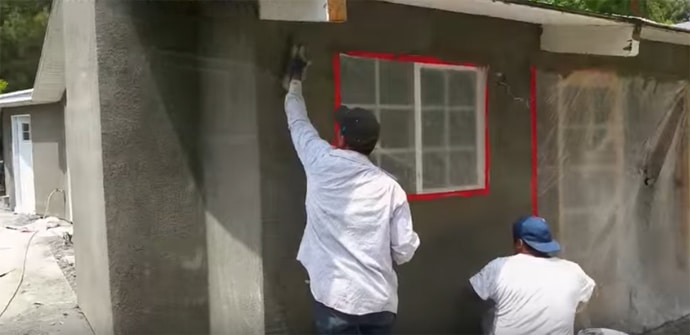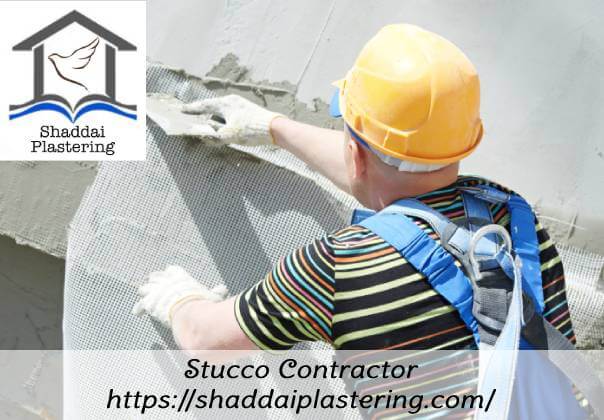The Ultimate Guide to Picking an Experienced Stucco Contractor for Your Demands
The Ultimate Guide to Picking an Experienced Stucco Contractor for Your Demands
Blog Article
Checking Out the Convenience of Stucco in Modern Style
Stucco has actually long been recognized for its aesthetic appeal and versatility, yet its function in contemporary design warrants a better exam. By exploring its ingenious applications, from striking facades to energy-efficient designs, one can appreciate how stucco is redefining the boundaries of architectural expression.
Historic Relevance of Stucco
The historic significance of stucco is extensive, as it has played an essential role in architectural practices across numerous societies for centuries. Coming from ancient human beings, stucco was used by the Egyptians and Greeks as a versatile and resilient surface for both interior and outside surface areas. Its flexibility to different environments and capacity to mimic more pricey products made it a preferred option.
In the Roman age, stucco ended up being a primary decorative component, utilized thoroughly in public buildings, rental properties, and temples. The Romans refined the application strategies, permitting elaborate styles and relief sculptures. During the Renaissance, stucco experienced a rebirth, specifically in Italy, where it was utilized in ornamental details and sophisticated facades, showcasing the virtuosity of the period.

Modern Applications in Style
Stucco has found renewed relevance in modern design due to its adaptability and visual charm (stucco contractor). This standard product is progressively utilized in modern style, connecting the void between classic and modern-day aesthetic appeals. Architects and developers value stucco for its flexibility, allowing it to be applied in different designs-- from minimalist frameworks to clarify Mediterranean layouts
In property jobs, stucco offers a clean, seamless surface that enhances the visual communication of facades. Its capacity to satisfy various forms and surfaces makes it a perfect choice for both new building and constructions and restoration projects. Additionally, stucco's longevity and reduced upkeep needs add to its growing popularity in urban settings, where long-lasting products are necessary.
Commercial applications have actually additionally embraced stucco, with numerous businesses choosing this material to develop inviting and distinctive stores. The use of stucco in public structures, such as colleges and recreation center, showcases its capacity for producing aesthetically attractive environments while providing excellent insulation residential properties.
Shade and Structure Developments
Exploring shade and structure developments in stucco has opened up brand-new opportunities for engineers and developers, improving the material's aesthetic influence in contemporary construction. Recent developments in pigment modern technology have actually permitted a larger range of colors, enabling developers to develop striking facades that integrate effortlessly with their environments or stand apart as strong architectural statements. This flexibility in color choice provides engineers the ability to evoke particular psychological feedbacks and balance with regional visual appeals.
Texture advancements have actually similarly transformed stucco applications. Methods such as troweling, spraying, and stamping have actually caused diverse surface coatings, varying from smooth and fine-tuned to responsive and tough. These variants not just add to the building's character however additionally play a crucial role in light interaction, enhancing the visual deepness and dimensionality of surfaces.
Additionally, the introduction of synthetic stucco alternatives has actually broadened layout possibilities, providing boosted longevity and weather condition resistance while maintaining visual allure. As architects remain to experiment with cutting-edge color combinations and distinctive additional hints surfaces, stucco continues to be a pivotal aspect in modern style, showcasing the material's adaptability and ageless relevance in contemporary style.
Sustainability and Power Efficiency
Technologies in shade and structure have not just enhanced the visual charm of stucco but additionally led the means for better focus on sustainability and power effectiveness in modern-day architecture. As environmental problems come to be progressively prominent, the building sector is transforming its focus to materials that contribute positively to ecological balance.
Stucco, made up mostly of natural products such as lime, sand, and concrete, uses a lasting alternative to more resource-intensive building products. Its long life and longevity lower the demand for constant substitutes, thereby decreasing waste and resource consumption with time. Modern-day stucco formulations frequently consist of energy-efficient ingredients that improve insulation residential properties, decreasing home heating and cooling prices for buildings.
The reflective qualities of stucco can also be crafted to mitigate warmth absorption, adding to cooler interior settings and less dependence on artificial environment control systems. By promoting power conservation and lowering the carbon impact of structures, stucco straightens with the principles of lasting style. As contractors and designers take on ingenious methods and green practices, stucco stands apart as a functional and liable selection in contemporary design.

Case Researches of Stucco Projects
The adaptability of stucco as a structure product is exemplified in different successful architectural tasks that highlight its aesthetic and practical benefits. One notable instance is the restoration of the historical Casa de la Guerra in Santa Barbara, California. The usage of stucco not only protected the building's Spanish he has a good point Colonial Rebirth design however additionally improved its resilience and climate resistance, making sure longevity while preserving architectural integrity.
One more compelling situation is the modern household job, the Cactus Home in Scottsdale, Arizona. stucco contractor. This striking home functions a smooth stucco finish that balances with the bordering desert landscape. The stucco's light shade reflects warmth, adding to power efficiency, while the distinctive surfaces add visual rate of interest
Furthermore, the Kings Cross redevelopment in London showcases the versatility of stucco in urban setups. The application of stucco on contemporary mixed-use structures produces a cohesive aesthetic that appreciates historical context while welcoming modern design concepts.
These study show just how stucco can serve different architectural purposes, from preservation and energy effectiveness to visual improvement, making it a versatile choice in contemporary design.
Final Thought
 Finally, stucco's historical importance and contemporary versatility make it a useful important source material in modern design. Its capability to harmonize traditional aesthetics with ingenious style, incorporated with advancements in shade and structure, improves its appeal. Additionally, stucco's protecting homes add to energy efficiency, while its lasting characteristics align with present environmental priorities. As shown via different case researches, stucco proceeds to play an important duty fit the architectural landscape of the contemporary period.
Finally, stucco's historical importance and contemporary versatility make it a useful important source material in modern design. Its capability to harmonize traditional aesthetics with ingenious style, incorporated with advancements in shade and structure, improves its appeal. Additionally, stucco's protecting homes add to energy efficiency, while its lasting characteristics align with present environmental priorities. As shown via different case researches, stucco proceeds to play an important duty fit the architectural landscape of the contemporary period. 
In final thought, stucco's historic significance and modern convenience make it a useful material in modern architecture.
Report this page